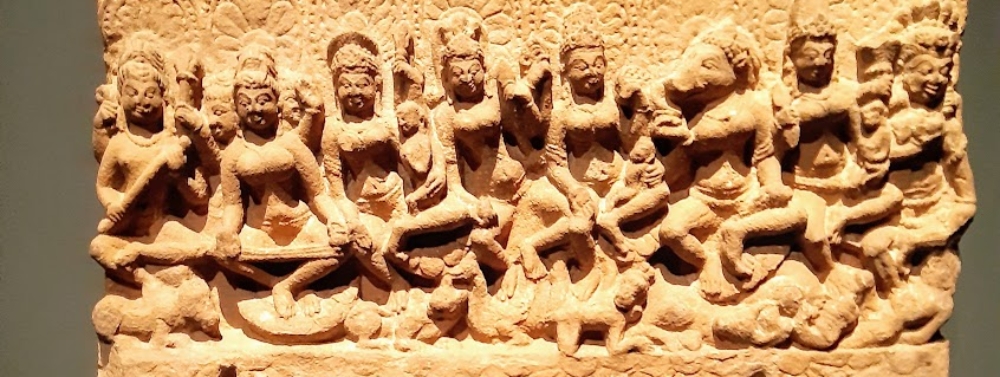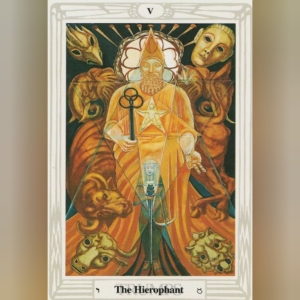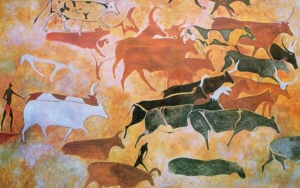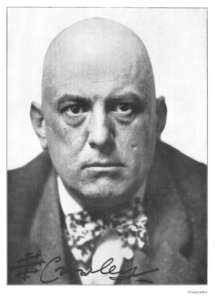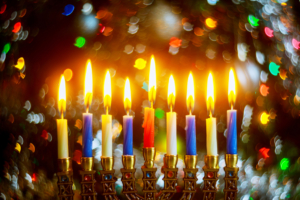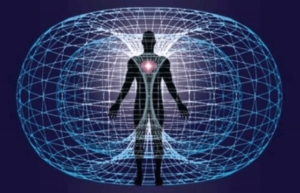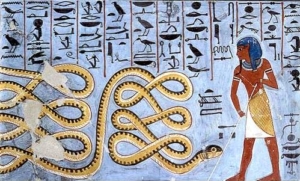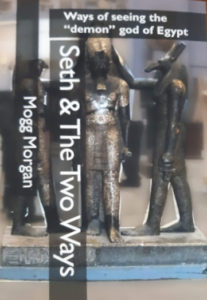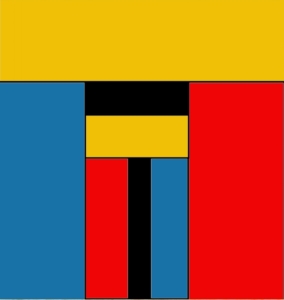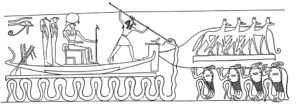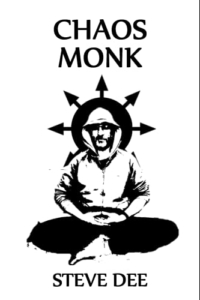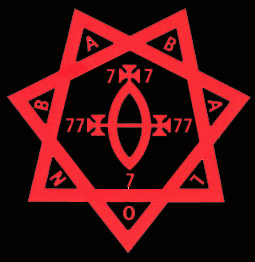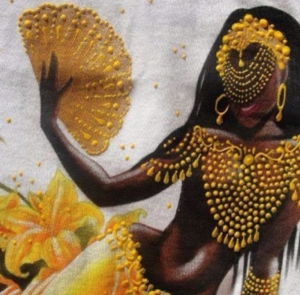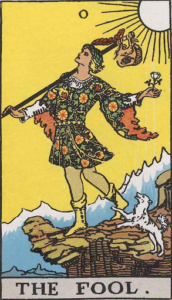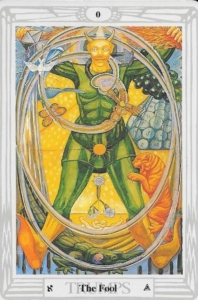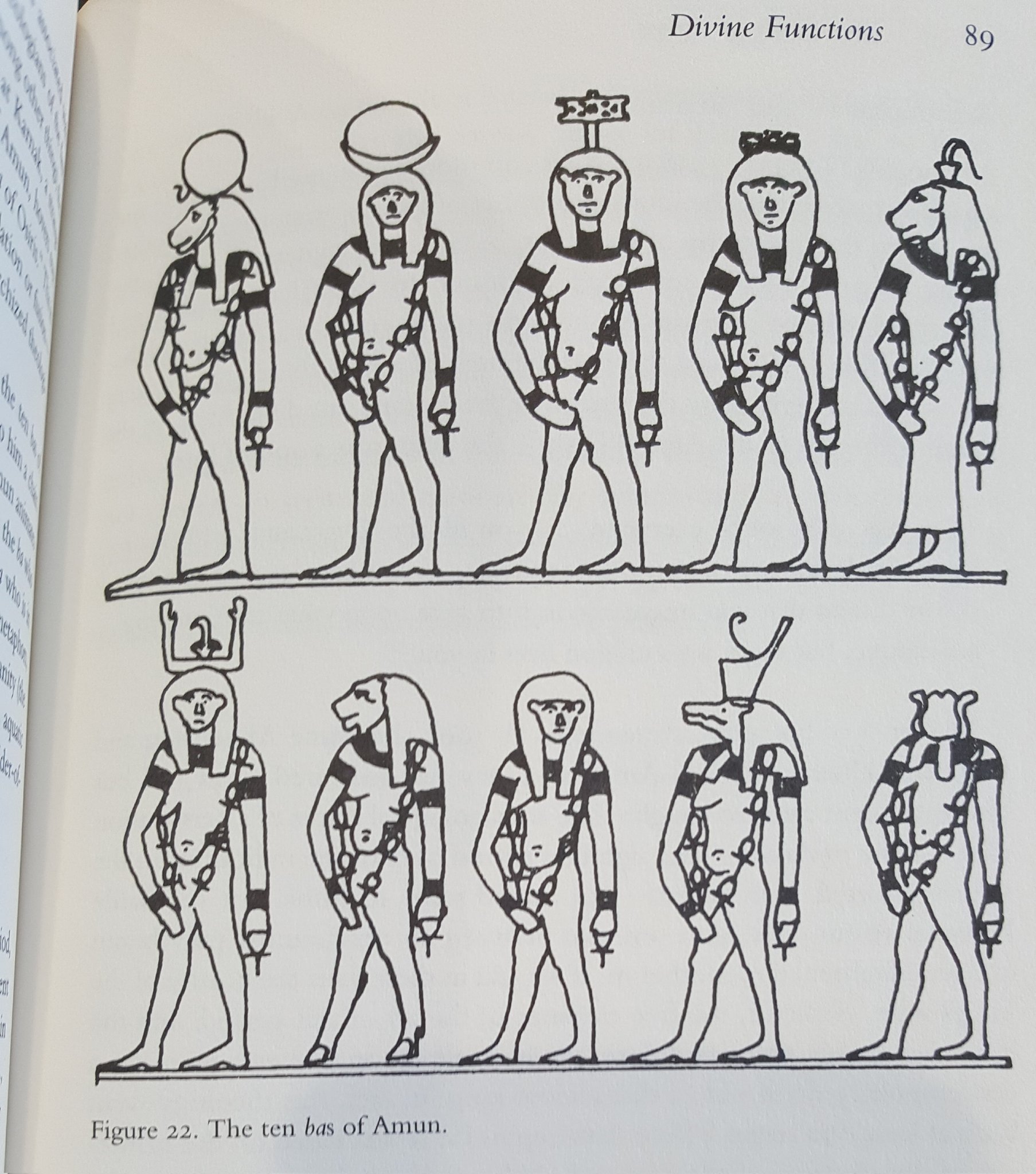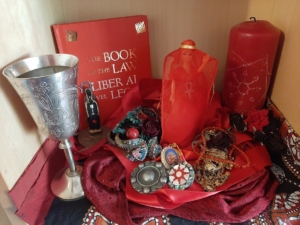
Babalon the Scarlet woman
The altar is raised structure or place that is used for sacrifice, worship, or prayer.
A working altar could be a table or anything similar to it.
The height of the Altar is equal to the height above the ground of the navel of the Magician. (Liber ABA, chapter III).
The altar is the place in which we focus our magical work and consecrate and keep our ritual tools. There are all sorts of altars, which usually correspond to different types of magical work and deities.
When we start working with a new deity, or one that we never worked with before, it is advisable to dedicate an altar just for it. In this way, we can fine-tune ourselves into the subtle energies of the deity. Only when we learn enough and get familiar with the deity, we might want to try and add another deity to the same altar.
Some deities even though belong to the same pantheons, would not approve of sharing the same space with one another. I realize that this might sound a bit nonsensical to the neophyte, but it is easy to detect, as soon enough you will notice the disharmony flowing around your house and affecting everything you do. Some traditionalists would even go as far as separating certain deities completely from the rest and dedicating a whole room to them.
But we are Chaos Magicians, I hear you say, how does this apply to us?
To master the art of Chaos magic, we need to learn first the order of things and how they work, only then we will know how to turn chaos into magic. To live in chaos does not make you a chaos magician…
I have many altars around the house, each one of them is like a PowerPoint of certain energy and information that I can stop by whenever I need or want to, and charge myself with. The main altar in the house is like an ongoing creation of itself, always changing according to the seasons and the sabbats or the main magical work of a specific time.
***
The Altar should delight
A personal magical altar should be a delight to behold. Keep things simple and aesthetically pleasing. For starting out, you need only a very few things. A basic altar usually has on it symbols of the five elements. Candles or lamps for fire, a cup for water, incense and burner for smell, a plate or pentacle for earth, a bell for spirit. Try to put aside any doubts you have about the need to have these things actually there. You will come to see these doubts as just another kind of conditioning that you need to work through.
Optional things for your altar are perhaps a special knife or wand to point with when doing an invocation. At this stage a finger does just as well. A wand you make now may not please you in a years time but you will nevertheless have great difficulty abandoning it. To avoid this problem, why not do without a wand until you really feel the need for one – perhaps you never will. Other useful things include a robe or cloak (black cotton is the most widely used variety). Robes and cloaks work well for standing up rituals, but for sitting down, of which there is a fair amount in Magick, they can be a bit restrictive. If your room is well heated then going naked might be an option, otherwise comfortable leggings, sarong or yoga trousers might be better.
One last recommendation, try using real incense, which is burnt on self lighting charcoal. Clouds of incense have long been used by magicians as an alternative to the ancient animal sacrifice. Real incense is more expensive, but can be more potent than joss sticks. But even the later vary a lot in quality, so investigate the best. Ask about reputable magical incense suppliers or details about how you can make your own – as with anything there are good and bad suppliers of such things.
(From Thelemic Magick: Mogg Morgan 2022)
***
From Liber ABA
CHAPTER III
THE ALTAR
THE Altar represents the solid basis of the work, the fixed Will
footnote: It represents the extension of Will. Will is the Dyad (see section on the Wand); 2 x 2 = 4. So the altar is foursquare, and also its ten squares show 4. 10 = 1 + 2 + 3 + 4.
of the Magician; and the law under which he works. Within this altar everything is kept, since everything is subject to law. Except the lamp.
According to some authorities the Altar should be made of oak to represent the stubbornness and rigidity of law; others would make it of Acacia, for Acacia is the symbol of resurrection.
The Altar is a double cube, which is a rough way of symbolizing the Great Work; for the doubling of the cube, like the squaring of the circle, was one of the great problems of antiquity. The surface of this Altar is composed of ten squares. The top is Kether, and the bottom Malkuth. The height of the Altar is equal to the height above the ground of the navel of the Magician. The Altar is connected with the Ark of the Covenant, Noah’s Ark, the nave (“navis,” a ship) of the Church, and many other symbols of antiquity, whose symbolism has been well worked out in an anonymous book called “The Cannon,”
WEH footnote: written by William Stirling
(Elkin Mathews), which should be studied carefully before constructing the Altar.
For this Altar must embody the Magician’s knowledge of the laws of Nature, which are the laws through which he works.
He should endeavour to make geometrical constructions to symbolize cosmic measurements. For example, he may take the two diagonals as (say) the diameter of the sun. Then the side of the altar will be found to have a length equal to some other cosmic measure, a vesica drawn on the side some other, a “rood cross” within the vesica yet another. Each Magician should work out his own system of symbolism — and he need not confine himself to cosmic measurements. He might, for example, find some relation to express the law of inverse squares.
The top of the Altar shall be covered with gold, and on this gold should be engraved some such figure as the Holy Oblation, or the New Jerusalem, or, if he have the skill, the Microcosm of Vitruvius, of which we give illustrations.
On the sides of the Altar are also sometimes drawn the great tablets of the elements, and the sigils of the holy elemental kings, as shown in The Equinox, No. VII; for these are syntheses of the forces of Nature. Yet these are rather special than general symbols, and this book purports to treat only of the grand principles of working.
{diagrams on this page, at top the microcosm of Vitruvius from the title page decoration (not frontispiece as is sometimes said) to Robert Fludd’s “Utriusque Cosmi Maioris scilicet et Minoris Metaphysica, Physica, Atque Technica Historia”, based on a Renaissance copy of Vitruvius’ 1st century “De Architectura” as interpreted by Cesariano in 1521, minus Fludd’s rope, clouds and winged fawn+hourglass, with the caption beneath “DESIGN SUITABLE FOR TOP OF ALTAR”, and below that a geometrical figure of the planets and stars from “The Cannon” fig. 3, p. 30, chap. II. with the under caption “THE HOLY OBLATION”}
{diagram on this page: Inside a dashed equilateral triangle are a scourge, chain, dagger and a wide, low perfume bottle shaped like a woman’s breast with nipple, below this is a scale in inches and below that the caption “THE SCOURGE, THE DAGGER, AND THE CHAIN; ENCLOSING THE PHIAL FOR THE HOLY OIL.”}
